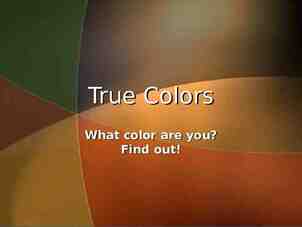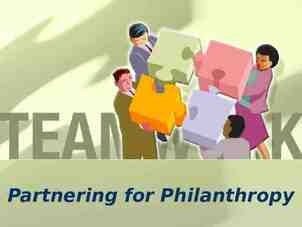NRO Basic Research Proposal Package Office of the Chief
16 Slides661.87 KB
NRO Basic Research Proposal Package Office of the Chief Technologist Science and Technology Partnership Forum Erica Rodgers [email protected] 06/22/2023 UNCLASSIFIED 1
Welcome NASA is invited to submit proposals to the NRO Basic Research portfolio. This is the first time NASA has been invited to contribute proposals to the NRO Basic Research call. 06/22/2023 UNCLASSIFIED 2
Basic Research Topic Areas 06/22/2023 UNCLASSIFIED 3
Basic Research Topic Areas 1. Remote Sensing 2. Apertures 3. Communications 4. System Design 5. Sense-Making 6. Other disruptive concepts and technology Proposers not typically associated with the NRO are encouraged to participate. Proposers capable of doing the basic research, even if they may not have production infrastructure for follow-on work are encouraged to participate. Technologies with maturity levels ranging from basic laboratory principles to laboratory demonstrations of concepts are desired. These map roughly to technology readiness levels (TRL) 1-3. 06/22/2023 UNCLASSIFIED 4
1. Remote Sensing Remote sensing includes sensor design, components, analysis, phenomenology, and methodologies for remote sensing. All wavelengths of electromagnetic radiation should be considered, as well as novel phenomenology such as magnetic gradiometry, gravimetry, laser remote sensing, bi-statics, quantum sensing, etc. Methods to detect, characterize, identify, and geolocate targets in all domains are desired, including underwater, terrestrial, airborne, and space environments. Revolutionary concepts should address improvements over the state-of-the-art in any of the following attributes: sensitivity of detection, characterization, or identification; accuracy of geolocation; spectral access; persistence; resiliency; automation; adaptability; SWaP-C (size, weight, power, and cost); photonics and lifetime. Sensing technologies that enable needs to be met from small satellites are emphasized, as are those that enable and ensure automated data processing and intelligence production. 06/22/2023 UNCLASSIFIED 5
2. Apertures Apertures includes design, components, analysis, phenomenology, and methodologies associated with optical apertures and radio frequency antennas for both sensors and communication links. This phenomenology could incorporate Pockel’s electo-optic effect. Proposers should consider the following: advanced materials to improve SWaP-C; designs to improve resolution; deployable apertures compatible with smaller spacecraft; coherent systems of distributed or sparse apertures; broader bandwidths; space-based manufacturing; adaptable or multi-purpose apertures; and improved performance in the space environment. 06/22/2023 UNCLASSIFIED 6
3. Communications Communications includes elements of communication systems not covered in the apertures section. This includes waveforms, protocols, receiver and transmitter hardware, security and authentication solutions, architectures, and analysis. Proposers should consider solutions that address the challenges of designing, implementing, and managing an integrated ground and space layer solution where assurance, authentication, and availability are critical. Multi-mode, secure communications solutions are desired, as are improved SWaP-C. 06/22/2023 UNCLASSIFIED 7
4. System Design Design includes concepts that improve satellite systems, operations, and integration that are not addressed by the other Basic Research Topic Areas. Examples include improvements in SWaP-C for satellite components such as power systems, attitude determination and control, propulsion, and microelectronics/photonics for onboard processing. It also includes in-space assembly, adaptable or multi-purpose systems, novel orbits, and clusters or constellations with distributed functionality. 06/22/2023 UNCLASSIFIED 8
5. Sensemaking Sensemaking includes all aspects of data processing, fusion, analysis, and contextual understanding related to intelligence production. Areas of emphasis include the following: automation, with the goal of autonomous analysis; fusion of heterogeneous data sources for improved intelligence value; advanced analytics, including applications of Artificial Intelligence; and process validation and assurance. The wide spread application of sensemaking technology and advanced analytics in other markets, such as self driving cars, and AI for the commercial sector, will likely provide viable concepts that are new to the space domain, and therefore appropriate. 06/22/2023 UNCLASSIFIED 9
6. Other Disruptive Concepts & Technology Disruptive concepts & technology includes technologies and methodologies that do not fit well in any of the other Basic Research Topic Areas. Included are concepts for advanced Research & Development such as the following: novel modeling and simulation of phenomenologies or systems; testing strategies for space systems, including ground-based, airborne, or low cost space-based concepts; advanced phenomenology; precision time and navigation concepts; and space applications of quantum technologies. Any concepts not appropriate to the other Basic Research Topic Areas may also be propose as disruptive concepts and technology, even if not mentioned directly as an area of emphasis. 06/22/2023 UNCLASSIFIED 10
Proposal 06/22/2023 UNCLASSIFIED 11
Submitting Proposal 1. Contact your Center Chief Technologist and the NASA Office of the Chief Technologist (Erica Rodgers, [email protected]) to state your intent to submit a proposal. 2. Write proposal. 3. Submit to Erica Rodgers by May 8, 2020. 06/22/2023 UNCLASSIFIED 12
Proposal Requirements 1. Summary Template (slide 15) Problem: Description of the Problem Goal/Objective: Study Objectives, Milestones Innovation: Technology Description Plan/Approach/Collaborators: Schedule, Start Date, Spend Plan, Personnel, Expenditure Metrics (It is expected to have 55% expenditure rates by June of the following year which means it can't take 6-9 months to get on contract), Contract (if applicable) Impact to NASA and NRO: Impact (so what). 2. Succinct White Paper that answers Heilmeier Questions (slide 16) Research Team Guidelines: Principal Investigator must be NASA civil servant/NASA direct support contractor/JPL Research team may consist of NASA civil servants/NASA direct support contractors/JPL Research team may be a NASA/commercial/academic/FFRDC/UARC partnership Research team may be an interagency partnership team including NASA and other government agencies 06/22/2023 UNCLASSIFIED 13
Proposal Downselect Downselect occurs May 2020 If proposal is downselected for final consideration then the Principal Investigator will prepare a 5 minute oral briefing to be communicated to the proposal review team during the June 8-29, 2020 timeframe. Oral briefing details will be provided if proposal is downselected. 06/22/2023 UNCLASSIFIED 14
y r a m e t m a l u S mp l e p e T am x Study Title NRO Basic Research Principal Investigator (Center) Problem Laser-based instruments, particularly the ones addressing Earth Science Decadal Survey, face daunting technical challenges and deemed high risk and unaffordable. Challenges include: Required output pulse energy and tunability Size, mass, and power Thermal design High cost and risk Innovation Laser consists of distinct building blocks to achieve the desired output parameters: Wavelength (1.0, 1.5, 2.0 micron) Spectral characteristics (purity, tunability) Modulation (pulse width, frequency waveform) CW or pulsed Power or pulse energy Modular Multi-Purpose Laser Concept 06/22/2023 Plan/Approach/Collaborators Modular laser design with highly efficient and compact components Amplifier modules based on a novel concept utilizing “hybrid fiber rod” and “in-band pumping” Laser design suitable for utilization of photonic miniaturization technologies Start date: Expenditure metrics: Personnel: Contract: (if applicable) Impact to NASA and NRO Goal/Objective Achieve pulse energies and wavelengths not yet available Modular design consisting of miniaturized components Users to select the modules per their application needs and attach them Milestones: Schedule: Requested Resources: (Procurement FTE) Amplifier Utilizing Hybrid Fiber Rod and In-Band Pumping UNCLASSIFIED Enable innovative laser instrument/sensors that addresses mission challenges Earth Science: global monitoring of the atmosphere and surface (8 out 15 decadal survey missions are laser based) Planetary Science: orbiting or land-based instruments providing geological and atmospheric data and EDL data Landing Aid: sensors providing hazard avoidance and navigation data Rendezvous and Docking Aid: sensors providing spacecraft bearing, distance, and approach velocity Aeronautic: aviation safety and efficiency (wake 15 data) vortex, clear air turbulence, winds aloft, air
https://www.darpa.mil/work-with-us/heilmeier-catechism 06/22/2023 UNCLASSIFIED 16





















